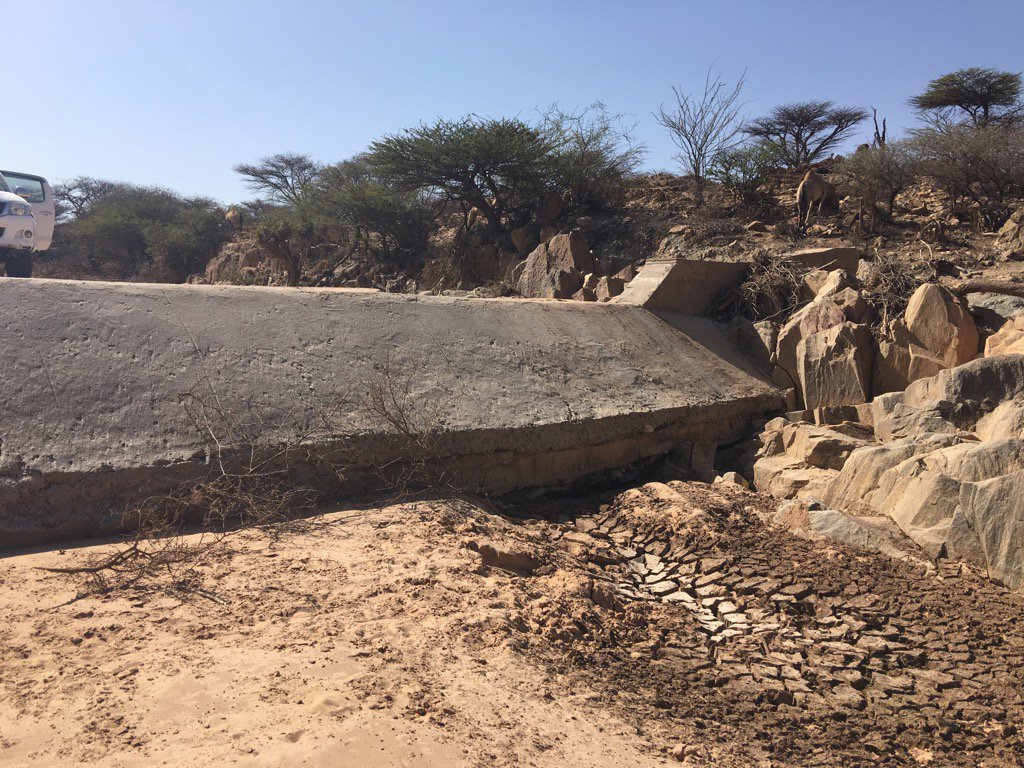
In the next map, I predict there will be major population shift if the ongoing droughts continue to push people to the brink of survival. I predict more displaced people, more urbanization and people as far as Haud in Ethiopia will cross the border into Somaliland to settle in small and major towns.
If the drought lasts for another 5 months, we will see a shift from nomadic or pastoralism lifestyle to urbanisation. We may see an increase in agriculture as people try to find a solution to the ever reoccuring shortages.
We will see major shift in prices of food and shortages in what was Somali traditional proteins; camel, goat, sheep and beef.
We should be able to recover in the next five to ten years. I am anticipating more nomads to settle in cities and send their kids to schools. Initially it will be difficult and there will be surge in poverty and displacement but eventually we will recover. The next major famine will not have as much impact because hopefully by then we will have more city dwellers than nomads seeking employment in other sectors.
Do not be concern about shortages in protein. I believe it will recover too but it will not be the industry that you once knew. We may see the first baby steps by entrepreneurs and investors to form what could possibly become the first small-medium commercial farming in Somaliland. I expect more people to buy huge sets of land to prepare for both agriculture and livestock commercial farming. Shortages will always be there irregardless because human wants are unlimited whereas supply and the process of producing their needs are limited.
In the 1940s and 50s we saw the shift from natural and makeshift reservoirs (natural catchments, bali) to people building berkado/man-made reservoirs similar to pools and the sinking of wells.

Today we entered the era of dams.
We will see the rise of major dams similar to that of Humboweyne and initially estimates state Somaliland could host as many as 150 medium-to-large dams that can store over 200m cubic metres of water per year.

Unlike balis, berkado and wells, which were once under the ownership of individuals and tribal interests, dams will become national assets. When people entrust these limited resources under the state, we will see the merger of medium to large firms either partnerships or proprietary companies. They will be the only ones capable of competing with the state for these resources and in our free market, people will always seek an alternative option.
For example if today the 10 largest livestock exporters merged and pitched to set up a multi-million dollar dam in Dacar-Budhuq to grow such and such, you bet they will most likely get the go ahead.
The more people we remove from pastoralism, the more resilient will be for the next major drought given that we have a window of opportunity of no less than 10 years.
People who left miyi ten years ago are not suffering as much as those who remained today.
The opportunity cost to this is that it could rain tomorrow for the next decade without a single drought and those who remained could see their animals increase by ten fold if not more.

Likely migration

seasonal rivers to be dammed in the future and land to be flooded
In the ongoing changes in SL, there will be short term winners and losers. I see drought hit hard regions such as Sanaag, Sool, Togdheer and Hawd (Ethiopia) as negatively impacted regions whereas we will see positive gains from Berbera to Tog-Wajale along the Berbera-corridor road...give or take anything above or below that channel.
We will see lots of cashflow in this area not only from traders, truck industry boom, restaurants, hotels but it will become hot real estate. The cash exchange will keep things moving.
Because of the positive impact by the port, Hargeisa will cope well with the influx of displaced people from Hawd, parts of Togdheer and surroundings.
Berbera will have or see little impact as it is far from most epic centers and nomads cannot go from camel herders to fishermen or deckhands overnight.
Wajale will see little impact as people in this region already transitioned from nomadism to semi-agriculturalist. Even they have proven that camels who remain on specific site become more resilient than those forced to chase every cloud and drop of rain across vast lands. They burn more calories and by the time they get to the new site pasture and water may have already dwindled.
Sanaag, Sool and parts of Togdheer will struggle the most.
I recommend the government to pursue more dams like that of Humboweyne especially in Awdal, south of Hargeisa, Aw Barkhadle, Dhacar-budhuq, Gacan Libaax, Sheikh, Daadmadheedh and the Togdheer seasonal river or Nugaal Valley.
I would like to see the government fence off an area of at least 5km sq of land for livestock (especially goats and sheep) pilot project with on site water source and alternating grassing/feeding grounds. The animals raised here could also contribute to future droughts by donating 5-10 goats/sheep per person (people who lost everything). It is also good security for what supposed to be Somaliland's main cash earner. Gradual transition and diversification are must but abandoning all together is unacceptable.
The Ras, observing things.



